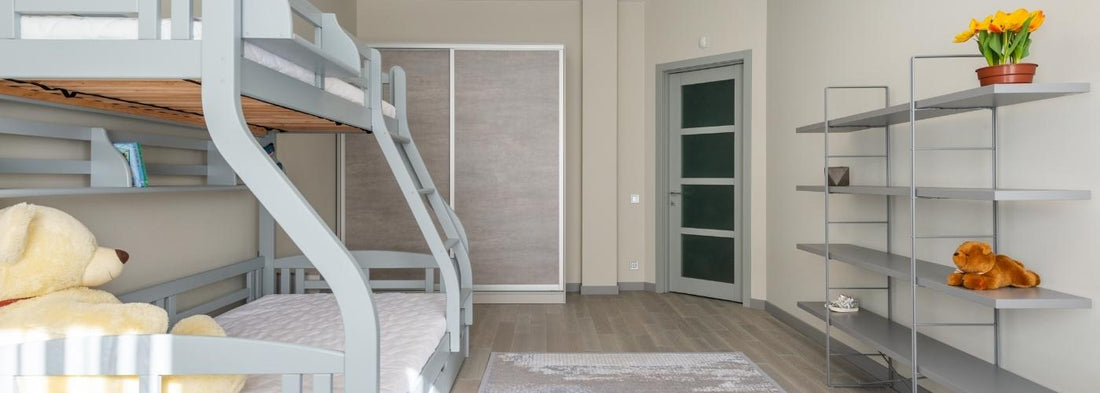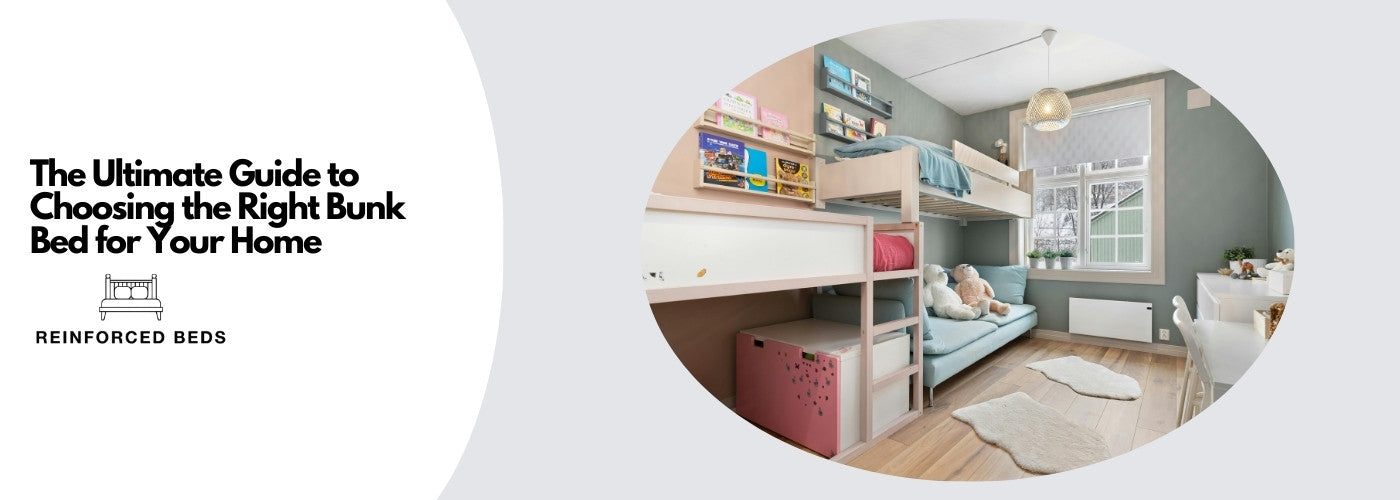
Bunk beds are a practical solution for maximising space, especially in shared or compact rooms. But over time (and with frequent use) they can start to feel less sturdy than they once were. If your bunk bed frame wobbles, creaks, or shifts when in use, it may be time to carry out some basic maintenance. In this article, we’ll explain how to make bunk beds more sturdy using straightforward fixes and preventative steps.
Why is my bedframe not sturdy?
If your bedframe moves side to side when you shake it, chances are that there is a problem with loose parts or separating joints. This is usually caused by age but could also mean that there has been some damage to the piece, or it has not been assembled properly. Not only is this highly uncomfortable to sleep in, but this also means that it's at risk of collapsing in the night. It will be a more economical solution to grab some tools and fix the issue before this occurs.
This is even more serious if this is a bunk bed, as a collapse could cause serious injury to those sleeping on either bunk. Making sure that the frame is not wobbly is important, so conducting regular checks – once a month – could save you from any issues in the future.

Product: Bircham Bunk Bed
How to Make Bunk Beds More Sturdy
Wobbly frames can often be rectified through simple do-it-yourself repairs.
- If your frame is held together by bolts, check to see if they are loose. These are frequently what causes it to become destabilised. By using a wrench or a screwdriver, you can easily tighten them to see if it helps.
- Next, fix your frame’s joints by gently hammering them together with a mallet and nails. If the joint was previously glued, then use a strong adhesive to stick the pieces firmly back into place. Make sure to hammer these together so that they make contact, and to clamp them whilst drying to achieve the best results.
- You might have a metal bunk bed frame. Whilst sturdier, these are trickier to fix, as the material they are made from can break or crack between the welds. The only way to deal with this is to have the frame re-welded or use an extremely strong metal glue, such as epoxy. These methods work but it's much safer to simply buy a new frame, as adhesives are not always reliable when supporting a person’s weight.
- If your bunk bed continues to wobble or show signs of damage after attempted repairs, replacing the frame may be the safest long-term solution. Look for models that prioritise durability, such as those built with reinforced tubular frames and tested for regular use. These types of bunk beds are often found in rental properties or commercial settings, where strength and reliability are essential over time.
Anchor it to the wall
One of the ways to make your bunk bed sturdier and safer is to anchor it to the wall – after you have fixed the frame, of course. This sounds complicated, but it is only a 10-minute job which can be done by anyone, regardless of their experience in home maintenance.
Find a point on your wall where a stud crosses paths with a rail on your bunk bed – preferably using a stud finder – then measure the frame component at that point for its width and diameter. You can then buy a C bracket which coincides with the readings, which can be placed over the frame and drilled into the wall.

Product: HD Bunk Bed Plus
Bracing
If the techniques above still don't feel satisfactory, you can brace the structure of your bed. This adds an extra layer of strength which assists by reinforcing your frame if it has become weak.
Brace the poles or planks on the top bunk by installing a solid wood or metal frame all the way around the infrastructure. This serves a double purpose by stopping any children – or adults – from falling whilst they are asleep, and from stopping the four poles holding it up from shaking.
You can also install a brace at the back of the bunk bed too, on the side closest to the wall. A thick, long plank across two of the poles is frequently enough to stabilise the frame.
Why is it so important to make your bunk bed more sturdy?
According to Medmattress.com, there are 36,000 related instances of bunk bed-related casualties every year. Falls from the top bed are the number one cause of most of these, which usually results in a concussion, and most occur in small children under the age of six who are advised not to use the top bunk in the first instance.
Over time, even the most well-built bunk beds can show signs of strain from daily use, especially in busy households, rental properties, or shared rooms. A wobbling frame, loose joints, or creaking noises aren’t just annoying, they’re signs that the structure may no longer be supporting weight as effectively as it once did.
If left unaddressed, these issues can increase the risk of more serious problems like joint separation or structural collapse. A weakened frame is more likely to shift unexpectedly or allow movement between levels, which can compromise the stability of both the upper and lower bunks.
Fixing a wobbly bunk bed is essential, but prevention is even better. If you’re starting from scratch or replacing an old frame, it’s worth understanding what to look for from the beginning. Read our Ultimate Guide to Bunk Beds to explore the best designs, safety features, and layouts to help you make a confident choice from day one.



